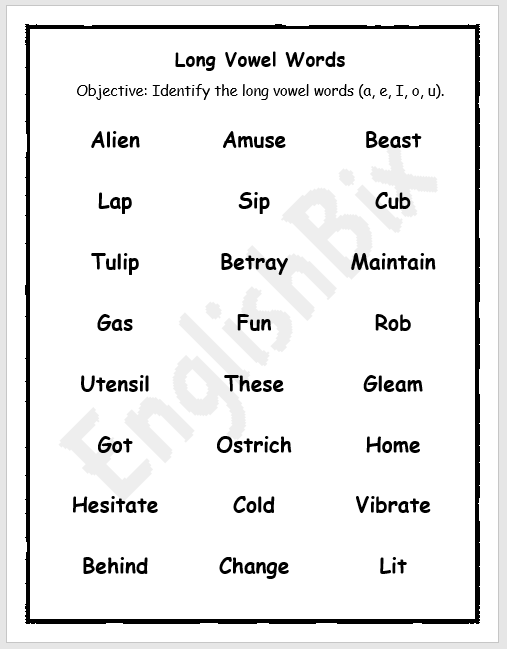

Often the first letter of the vowel combinations, especially ‘ai’, ‘ay’, ‘ea’ (sometimes- see Digraphs, below), ‘ee’, & ‘oa,’ will be long & the second will be silent. Igh and -ight are usually long I (and silent GH): bright, fight, high, light, might, night, right, sigh, sight, tight. (Some English speakers use a short ‘a’ in the 2nd syllable, while others use a long ‘a,’ but both ‘o’s are long for everyone.) Examples: I, we, he, she, go, try, potato and tomato. Other Long Vowels: A vowel at the end of a syllable is almost always long. Those words are common, but many more -ve, -one words, & -ice are long: cove, dive, dove (the past tense), drive, drove, five, gave, grove, hive, knives, live (the adjective), pave, revive, save, stove, strive, survive, thrive, alone, bone, cone, phone, stone, tone, & advice, dice, ice, nice, price, rice, etc. A few others: are, come, done, gone, none, and one, as well as office. There are just a few exceptions, most involving a 've' or an 'ne': above, dove (the bird), give, have, live (the verb), love, move, prove, solve, etc.

(Examples: ate, plane, Pete, bite, nine, rope, note, cube, flute.) Silent ‘E’ Rule: When a vowel and single consonant are followed by an ‘e’ (in the same syllable), the ‘e’ is almost always silent, but it causes the preceding vowel to be long.



 0 kommentar(er)
0 kommentar(er)
